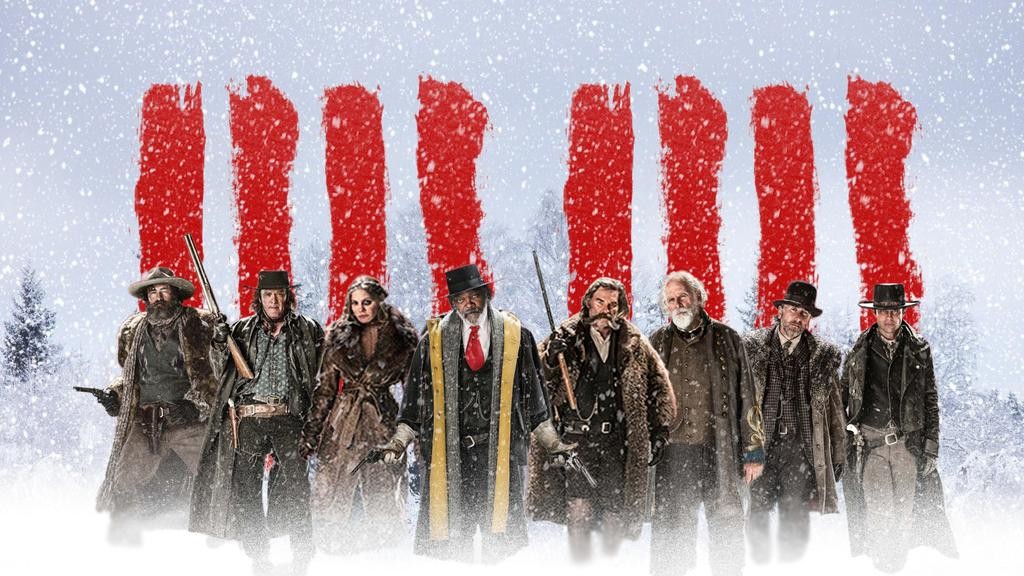TL;DR
Quentin Tarantino's "The Hateful Eight" is an ambitious, snowbound western with a stellar cast and classic Ultra Panavision 70mm. Expect Tarantino's signature sharp dialogue, dark humor, and escalating tension as a group of strangers with questionable motives are trapped in a remote cabin during a blizzard. While the nearly three-hour runtime and occasional slow pacing might test some viewers, the film delivers powerful performances, especially from Samuel L. Jackson, Tim Roth, and Jennifer Jason Leigh, all amplified by a stunning visual format and Ennio Morricone's epic score. It's a brutal, entertaining, and unsettling cinematic experience designed for the big screen. Dive into the full review to see why this is a must-watch.
Quentin Tarantino delivers an ambitious work in his eighth film, The Hateful Eight. Set in the snow-covered mountains of Wyoming, the film features a notable cast including Tim Roth, Samuel L Jackson, Jennifer Jason Leigh, Kurt Russel, and Michael Madsen, each portraying characters with questionable sanity and, true to the title, a significant degree of animosity. Beyond the ensemble of talented actors, the film is notable for its use of the classic Ultra Panavision 70mm film format and its extended runtime of nearly three hours. Scanbox’s special screening at a specially renovated hall in Rigoletto, Stockholm, heightened the anticipation. Given Tarantino’s assertion that this could be cinema’s defense against home theaters and piracy, the “Roadshow” screening, complete with an intermission and an additional six minutes of footage, provided a compelling cinematic experience.
The narrative of The Hateful Eight centers on Daisy Domergue, played by Jennifer Jason Leigh, a prisoner being transported by John Ruth, a bounty hunter, to Red Rock for execution. A blizzard forces the group to seek shelter in a mountain cabin, where they encounter other enigmatic individuals. As the story unfolds, viewers can expect violence, intense characters, sharp dialogue, and dark humor – all hallmarks of Tarantino’s directorial style.
Known for films such as Pulp Fiction, Reservoir Dogs, and Kill Bill, Tarantino returns to the revenge western genre, following Django Unchained. The performances and dialogue are consistently engaging, creating palpable tension that suggests imminent eruption into violence. The motivations of the characters are initially apparent, or so it seems. Tarantino’s use of non-linear storytelling challenges initial assumptions as the plot progresses. Samuel L. Jackson delivers a particularly strong performance, and Tim Roth is also compelling. Jennifer Jason Leigh embodies a truly detestable character with effective timing and presence. Kurt Russel delivers what could be considered one of his best roles, and Michael Madsen, a frequent collaborator, provides a reliably solid performance.
While the film is largely successful, the three-hour runtime occasionally feels protracted. The pacing can be slow at times, and while the dialogue is generally captivating, some scenes feel somewhat drawn out. However, these are minor issues in an otherwise exceptional film that is both original and brutal. The film is simultaneously entertaining and unsettling, featuring a collection of memorable characters in a confined setting. Tarantino enthusiasts, and many others, are unlikely to be disappointed.
Photographer Robert Richardson ASCThe Ultra Panavision 70mm format effectively captures the grandeur of Colorado’s expansive, cold landscapes. The enthusiasm of Tarantino and cinematographer Robert Richardson for this format is infectious. Experiencing the extreme wide-angle technology in a cinema setting for the first time in six decades is undeniably impressive, providing a significantly wider field of view, both in landscape shots and close-ups. This, combined with Ennio Morricone’s first score for a western in 40 years since The Good, the Bad and the Ugly, creates a truly memorable cinematic experience. I strongly recommend seeing this film in theaters. It is, once again, Tarantino time.

